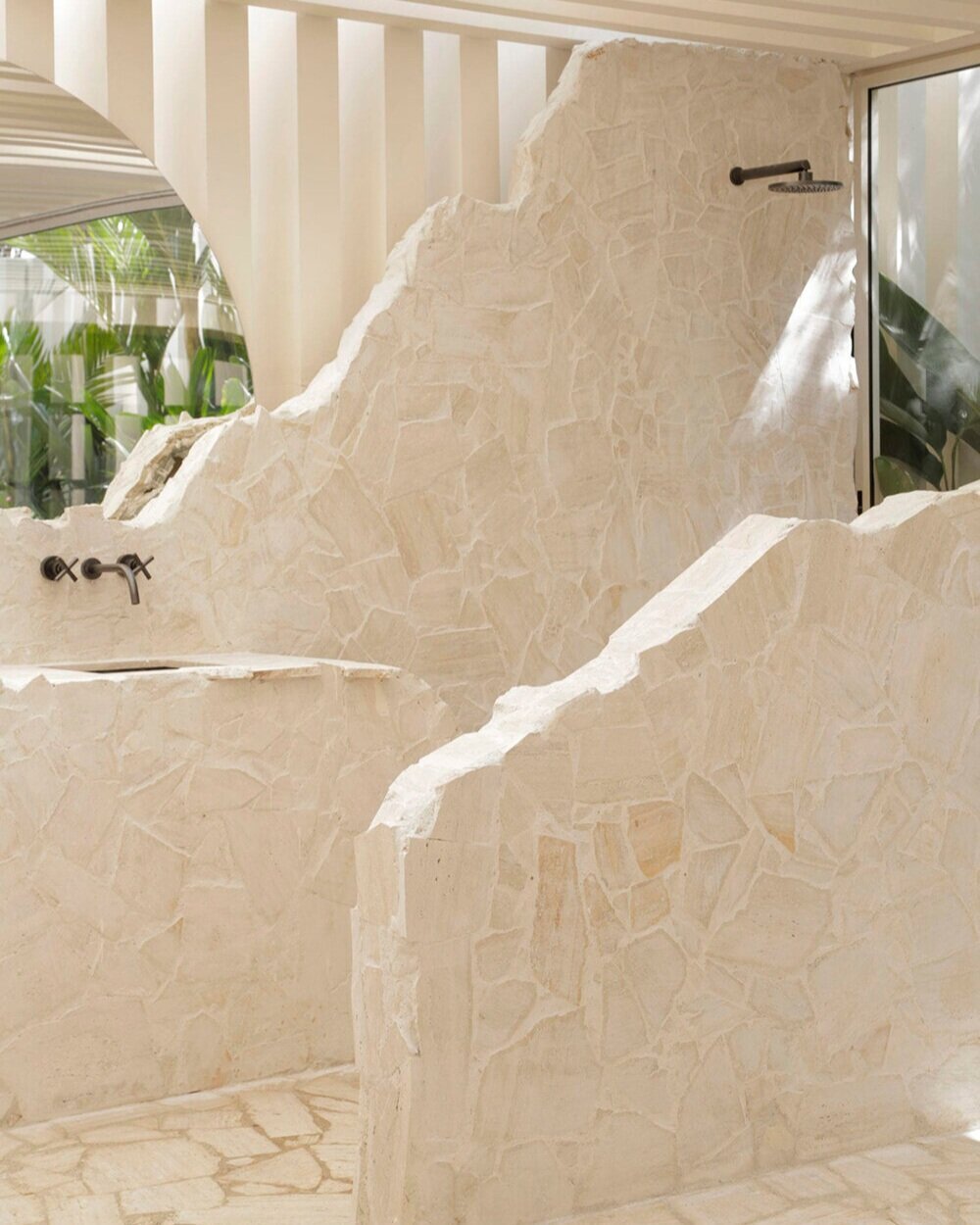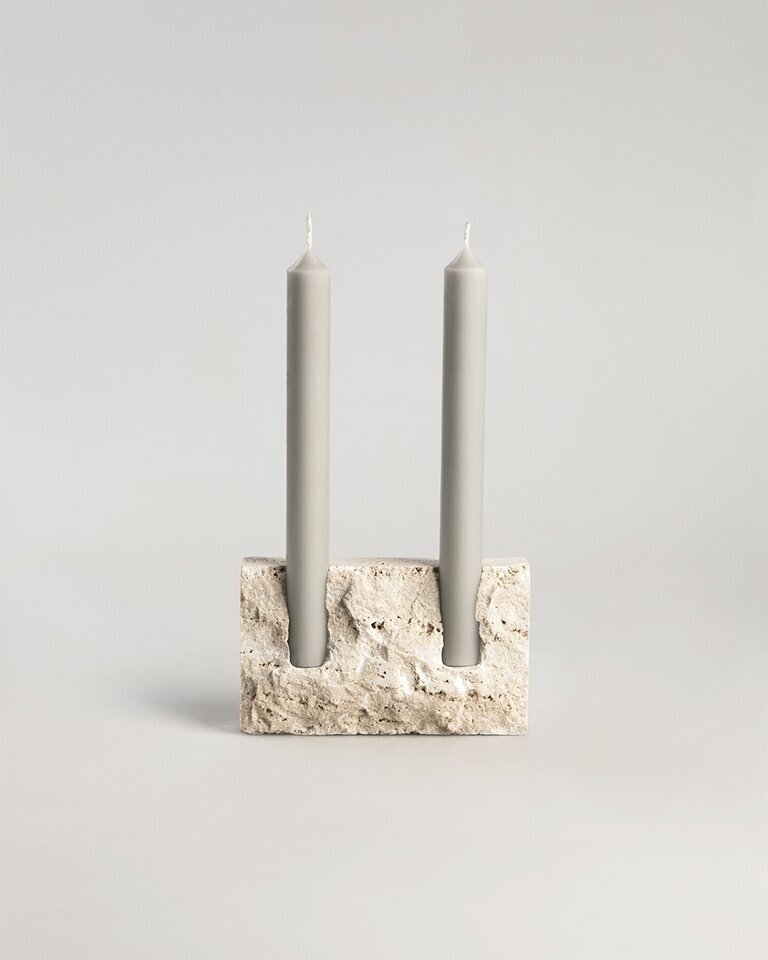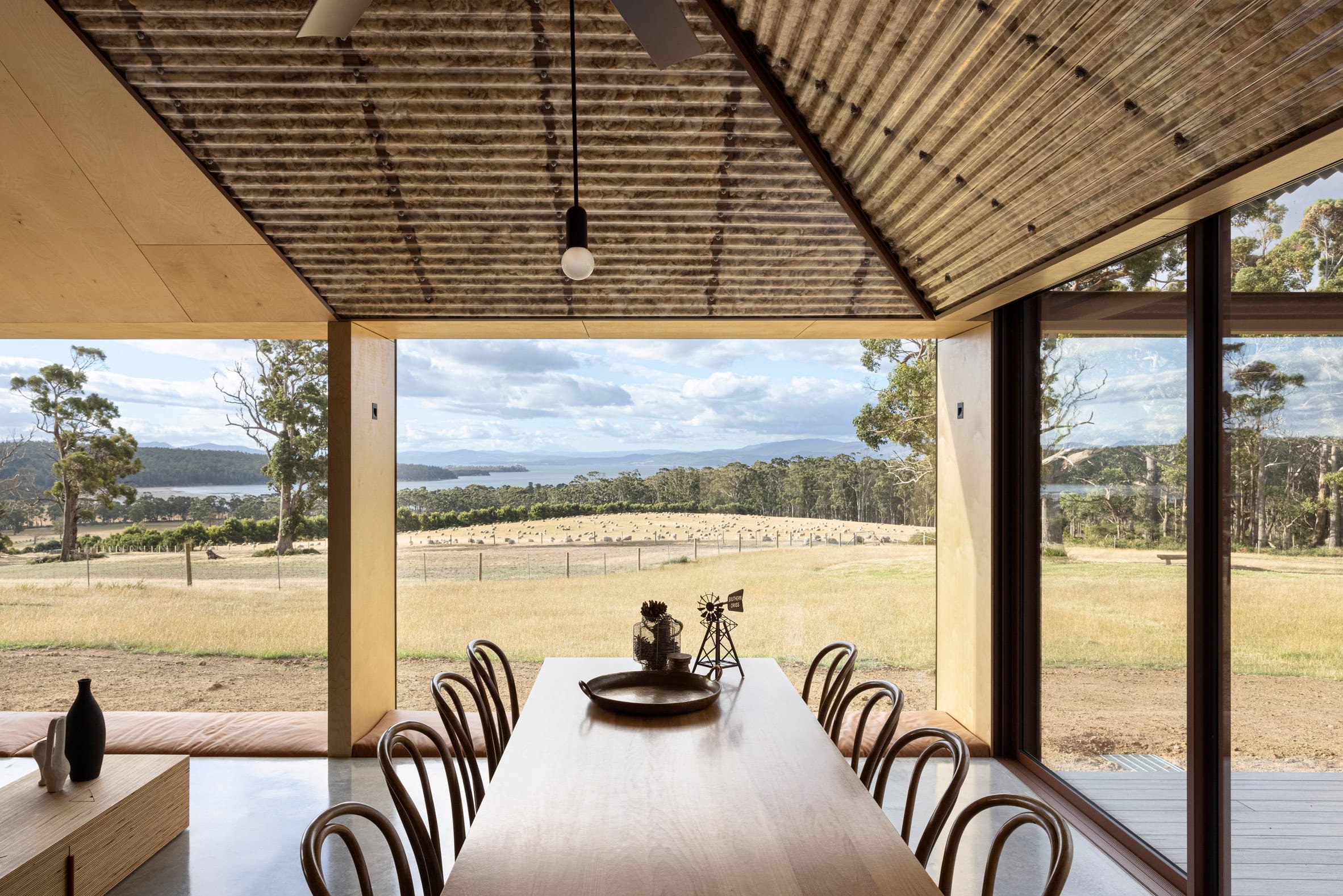Calm material trend: limestone
Sibipirunas Concept House by Studio Otto Felix
Neutral-toned limestones emerge as a strong material direction to create warm minimal interiors, striking a delicate balance between mass and weightlessness. Using natural surfaces such as sandy travertine or beige chalk, designers introduce a calm sensuality to spaces and products.
Limestones in soft beige and off-white tones are increasingly used in interiors, adding texture and warmth to quiet minimalist spaces. Their soft matte finish makes for serene set-ups, especially when worked in curvy, fluid shapes, as the clean lines highlight the natural qualities of the material. Replacing the veined marbles that we’ve seen a little too much of in recent years, stone appear as wall and floor covering or in small decorative pieces. With tonal beige schemes gaining more and more traction this year, it’s essential to play with a variety of surfaces to avoid monotony, and travertine pairs beautifully with light wood panelling or white plaster, as well as with natural fibres like sisal and straw.
Canopy House by Leeton Pointon Architects & Allison Pye Interiors - Photographer: Lisa Cohen
Toteme Boutique by Christian Halleröd
Indeed, natural stones make for much warmer environments than marble, retaining the minimalist aesthetic we like, while imbuing it with more softness, and a more crafted appeal.
Last summer, Brazilian architect Otto Felix designed a showhome for Casacor, the annual design fair showcasing new work from architects, landscapers and interior designers, in São Paulo. The conceptual project used leftovers pieces of Roman Travertine in a matte texture to bring a sense of nature indoors. The great advantage of limestone is that it soaks up the light instead of reflecting it back, which is what creates this warm aesthetic that is both rustic and ultra-contemporary at the same time.
Sibipirunas Concept House by Studio Otto Felix
Sibipirunas Concept House by Studio Otto Felix
Statuesque furniture pieces in limestone are visually impactful yet delicate, creating a calm presence. Solid pillars and monolithic forms emphasise the materiality of the stone and the natural beauty of its veins, bringing a feeling of grounded weightiness to the home. Danish design company Gubi released Epic, a collection of elegant and sophisticated tables inspired by Greek columns and Roman architecture. The designs by GamFratesi are made from authentic travertine, meaning no two pieces are ever exactly alike.
“We love natural stone, but we are always curious about new expressions and materials. Travertine has a completely different materiality and structure to marble and even in the same colours, can express many different tones and variations. ”
— Jacob Gubi Olsen, owner and creative director, Gubi
Gubi
Gubi
The tactility of limestone is also combined with sleek brass finishes, creating contrasts of rough and polished. Smooth, gently curved silhouettes further enhance the organic nature of the material for a soft look and touch. The great benefit of these pairings is that it allows objects to remain pared-back in their design, while adding a variety of interesting textures to the home, the perfect combination for a warm and welcoming type of minimalism. Just the way we like it.
Frédéric Saulou
Menu
Raw, jagged designs on the other hand, celebrate local craft and emotional value. French designer Frédéric Saulou carves out flawless, sensual designs from Pierre de Bourgogne, but also rough-hews flat slabs of it into crude shapes, exploring all the potential of the material. Likewise, Swedish studio Sanna Völker uses Italian travertine in its raw form for a candleholder collection, available at Dutch lifestyle boutique The Fine Store. The essence of the product is the stone itself, hand sculpted by stonemasons who have mastered their craft for four generations. All pieces are made from natural stone leftovers, some up to 500 million years old, handpicked from a quarry located in a small mountain village in the province of Barcelona.
Frédéric Saulou
The Fine Store
Martin Massé
David Pompa
Kelly Wreastler
Dan Yeffet


















